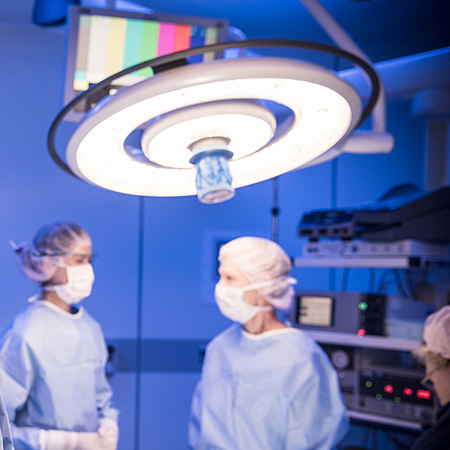 As part of its effort to support the development of next-generation healthcare lighting, the U.S. Department of Energy developed an online nurse survey that was administered by a nonprofit healthcare organization that manages multiple hospitals in the Pacific Northwest. In August 2015, 252 nurses at four hospitals answered questions about the lighting in the patient room where they most often worked. The primary goal was to determine what’s needed in an ideal patient room lighting system, with a secondary goal of identifying opportunities for increasing energy efficiency.
As part of its effort to support the development of next-generation healthcare lighting, the U.S. Department of Energy developed an online nurse survey that was administered by a nonprofit healthcare organization that manages multiple hospitals in the Pacific Northwest. In August 2015, 252 nurses at four hospitals answered questions about the lighting in the patient room where they most often worked. The primary goal was to determine what’s needed in an ideal patient room lighting system, with a secondary goal of identifying opportunities for increasing energy efficiency.
Nurses with varying ages and years of experience completed the survey. They worked in a newly constructed children’s hospital, an older hospital with some renovated patient rooms and two older hospitals (one urban and one suburban). The nurses rated and ranked the aspects of lighting that helped or hindered their performance of tasks, and rated the quality of the lighting in different areas of the patient room. They also indicated whether or not they used supplemental lighting and, if so, what kind they used. One question asked the nurses to select different words to describe the patient room lighting. They were also asked to list the best feature of the lighting system (which in all cases was fluorescent), and how lighting systems could be improved.
Among the preliminary findings:
- Light level was ranked as the number-one lighting attribute that affected the nurses’ ability to perform their professional duties. They commented about not having enough light for IVs and for assessment and care of skin, wounds, ulcers, and lower extremities; however, complaints from patients about too much light were also frequent comments. The computer area was noted as having either too much or too little light.
- Controls were identified as the second-most-important attribute by the nurses. When considering the best thing about the patient room they work in the most, 79 percent of the 175 comments were related to controls, with 12 percent addressing control location and 10 percent addressing lighting zones.
- When commenting on the best thing about the lighting in the patient room they work in the most, nearly one-third of the 175 comments mentioned dimming as a positive or desired attribute. (“I love having dimmer switches in the patient care rooms, as it allows me to bring just enough light to see what I’m doing, but also to keep patients comfortable, as bright fluorescent light seems to make people anxious.”)
- Nighttime navigation had over twice as many poor ratings as any other area in the patient room, and was the area with the most “poor” ratings for each of the four hospitals. A range of measures were taken by nurses to provide nighttime lighting for their tasks without disturbing the patients, from barcode scanners to bathroom lights. (“We all use the bathroom light with door open as a low light option in the middle of the night as to not jar the patient awake.”)
- Sixty-eight percent of the 252 nurses completing the survey reported using supplemental lighting in addition to the patient room lighting, with 24 percent mentioning the use of a flashlight. The most common uses of supplemental lighting, in order of frequency, were catheter procedures, IV procedures and night lighting.
Overall, color was less important to the nurses than controls and light level, but was more important than the other attributes nurses were asked about, including flicker, shadow, patterns and glare. The spectral properties of light have received increased attention in the lighting industry, specifically as related to healthcare; however, nurses’ concerns regarding light level and controls should remain major considerations when designing the next generation of patient room lighting systems. (“I love having OPTIONS of lighting. To be able to sneak in at 4 a.m. and turn on a tiny light in the nursing area, which does not shine on the family or patient as they are sleeping, is amazingly wonderful to have. Otherwise, us night nurses use the light from the IV pump, or maybe a flashlight – but you can’t hold the flashlight AND use your hands to do tasks.”)
